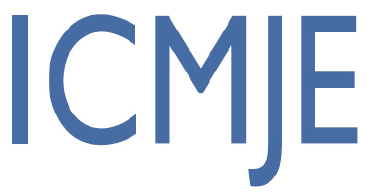





The Comparison of Obsessive Compulsive Disorder in Children and Adolescents with Adults: The Distribution of Symptoms and Comorbidity
Tümer TÜRKBAY1, Ali DORUK2, Hakan ERMAN3, Teoman SÖHMEN41Uz. Dr., GATA Çocuk Ruh Sağlığı ve Hastalıkları Anabilim Dalı2Uz. Dr., Ruh Sağlığı ve Hastalıkları Anabilim Dalı,
3Uz. Dr., İmge Ruh Sağlığı ve Danışma Merkezi, ANKARA
4Prof. Dr., GATA Çocuk Ruh Sağlığı ve Hastalıkları Anabilim Dalı
The aim of this study was to compare the distribution of symptoms and comorbid disorders in children and adolescents with obsessive-compulsive disorder (OCD) with adult patients. Forty-four children/adolescents and 37 adults with OCD referred to the departments of child and adolescent and adult psychiatry were enrolled this study. The Children's Yale-Brown Obsessive Compulsive Scale, Moudsley Obsessive-Compulsive Scale (MOCS) and other scales for screening comorbidity were given to the children and adolescents. Adult patients were evaluated by MOCS and SCID-I. The mean age of children and adolescent group were 11.15 ± 4.00 years (between 3 and 17), which of adult group were 25.81 ± 5.54 years (between 18 and 40. When the MOCS scores of children and adolescents were compared with adults', total MOCS scores of adults were significantly higher than children and adolescents (p<.05), but no differences were found in any MOCS subscales between two groups, except slowness subscale (p<.05). Twenty (45.5%) of all children and adolescents had comorbid disorders that the following concurrent diagnoses in order of the frequency: depressive disorder (n=5, 11.4%), separation anxiety disorder (n=4, 9.1%), attention-deficit disorder (n=2, 4.5%), tic disorder (n=2, 4.5%), conduct disorder (n = 1, 2.3%), social phobia (n=1, 2.3%), and PTSD (n = 1, 2.3%). However, the adult patients had 56.8% (n=21) comorbid diagnosis in order of the frequency: 14 (37.8%) depressive disorder, 4 (10.8%) other anxiety disorders, 2 (5.4%) chronic motor tic disorder, and 1(2.7%) bipolar affective disorder. The types ofOCD symptoms are essentially identical in children- adolescents and adults. The number of symptoms in adults is higher than children and adolescents. We suggest that children generally aren't aware of their obsessions and compulsions, so children are less likely to report them. Adults with OCD have more comorbid disorder than children and adolescents. Depression is the most common comorbid psychiatric disorder in both children-adolescents and adults with OCD.
Keywords: Key Words: Obsessive compulsive disorder, child, adolescent, adult, symptomatology, comorbidity.
Obsesif Kompulsif Bozukluğun Belirti Dağılımının ve Komorbiditesinin Çocuk ve Ergenler ile Erişkinler Arasında Karşılaştırılması
Tümer TÜRKBAY1, Ali DORUK2, Hakan ERMAN3, Teoman SÖHMEN41Uz. Dr., GATA Çocuk Ruh Sağlığı ve Hastalıkları Anabilim Dalı2Uz. Dr., Ruh Sağlığı ve Hastalıkları Anabilim Dalı,
3Uz. Dr., İmge Ruh Sağlığı ve Danışma Merkezi, ANKARA
4Prof. Dr., GATA Çocuk Ruh Sağlığı ve Hastalıkları Anabilim Dalı
Bu çalışmanın amacı çocuk ve ergenlerde obsesif kompulsif bozukluğun (OKB) belirtilerinin dağılımı ile komorbid bozuklukları saptamak ve bunları OKB'si olan erişkinlerle karşılaştırmaktır. Çalışmaya çocuk ve ergen ile erişkin psikiyatrisi polikliniklerine müracaat eden, OKB tanısı konan 44 çocuk ve ergen ile 37 erişkin alındı. Çocuk ve ergenlere Çocuklar İçin Yale-Brown Obsesif Kompulsif Ölçeği, Maudsley Obsesif Kompulsif Soru Listesi (MOKSL) ve komorbid bozukluk tanısı için gereken diğer ölçekler verildi. Erişkinlerde ise MOKSL ve Yapılandırılmış Klinik Görüşme Formu-I (SCID-I) ile değerlendirme yapıldı. Çocuk ve ergenlerin yaş ortalaması M. 15±4.00 yıl (3-17 yıl), erişkin hastaların 25.81 ±5.54 yıl (18-40yıl) olarak bulundu. İki grubun MOKSL puanları karşılaştırıldığında; erişkinlerin toplam MOKSL puanlan ve yavaşlılık alt ölçek puanları çocuk ve ergenlere oranla anlamlı derecede yüksek bulundu (p<.05). Diğer alt ölçek puanlarında anlamlı bir farklılık gözlenmedi. Çocuk ve ergenlerde komorbid bozukluklar %45.5 (n=20) olarak bulundu. Sıklık sırasına göre komorbid bozukluklar: depresyon (n=5, %11.4), aynlık kaygısı bozukluğu (n=4, %9.1), DEHB (n=2, %4.5) ve tik bozukluğu (n=2, %4.5) şeklindeydi. Erişkinlerde ise komorbidite %56.8 (n=21) olarak bulundu. Erişkinlerde komorbid bozukluklar depresyon (n = 14, %37.8), diğer anksiyete bozuklukları (n=4, %10.8), kronik motor tik bozukluğu (n=2, %5.4) ve iki uçlu duygulanım bozukluğu (n = 1, %2.7) olarak sıralandı. Çocuk ve ergenlerin belirti sayısı erişkinlere oranla daha az,fakat belirti dağılımı benzerdir. Bu bulgu çocuk ve ergenlerin belirtilerini ifade edememe veya farkında olmamaları ile ilişkili olabilir. Erişkinlerde komorbid bozukluk çocuk ve ergenlere göre daha sıktır. Hem erişkin hem de çocuk ve ergenlerde OKB'de en sık olarak konulan komorbid tanı depresyondur. Yaşla birlikte komorbid bozukluk riski artmaktadır.
Anahtar Kelimeler: Anahtar Sözcükler: Obsesif kompulsif bozukluk, çocuk, ergen, erişkin, semptomatoloji, komorbidite.
Manuscript Language: English
(3556 downloaded)










